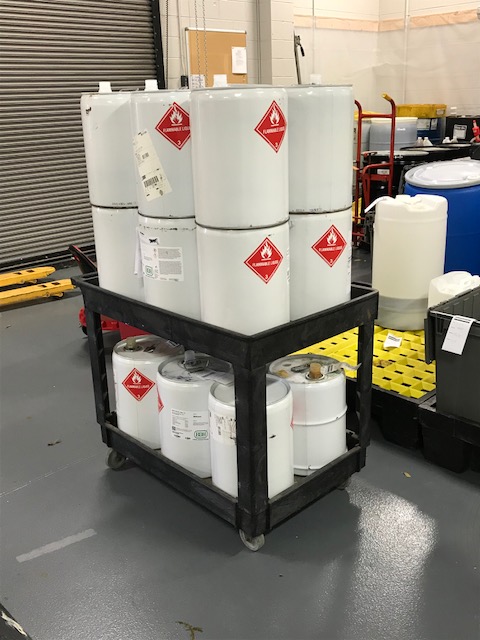On November 28, 2016 the Environmental Protection Agency (EPA) published changes to the regulations governing Hazardous Waste. These new rules became effective in the State of Georgia on September 28, 2017. Many of the changes have to do with record keeping and reporting but some have a direct impact on the laboratories and shops which actually produce the waste:

-
The words “Hazardous Waste” and
-
A description of contents, again chemical names as opposed to process description and
-
An indication of hazards presented, e.g., “Flammable”, “Corrosive”, etc. This information is intended to alert 1st Responders to the dangers associated with the waste.

Waste Container Selection: No change here. Waste containers must be serviceable and compatible with the waste – no acid in metal cans, no hydrofluoric acid in glass bottles.
Keeping containers closed: Waste containers must be kept closed, e.g.screw cap or covered funnel, except when adding waste. EPA has now recognized that tightening caps on waste mixtures which may continue to react, such as Piranha, is not a good idea.
Are you wondering, what is “Hazardous Waste”? From a regulatory viewpoint the term applies to an extensive, but finite, list of chemical materials. [Characteristic waste with flashpoint or pH limits or specified concentrations of selected metals and organics; mixtures from non-specific sources such as those containing specified concentrations of certain solvents; mixtures from specific industrial processes; and, 500 specific elements or compounds.] This material may be regulated by other EPA regulations or by other regulatory agencies. For example, the State of Georgia, not the EPA, regulates bio waste; and, the local water authority dictates what can’t go down the drain.
What has this to do with the waste producer? The EPA is insistent that a determination as to whether a waste material is a “Hazardous Waste” be made at the location (lab or shop) where it becomes a waste. A waste determination is a multi-step process involving the interpretation of several parts of the regulations and the application of the seven hundred (+) criteria above, as well as exclusions, under certain management options, for material such as used oil and mercury containing light bulbs.
There are potential penalties for incorrectly identifying material as “non-hazardous”; however, there is no penalty for managing “non-hazardous” material as “hazardous”. Hence, in labs and shops, we will continue to refer to:
“Any substance no longer of use to the possessor whose chemical or biological properties do, or may, endanger personnel, material or, the environment if handled improperly” as “hazardous waste”.
EHS will determine what is RCRA Hazardous Waste and what is not.

